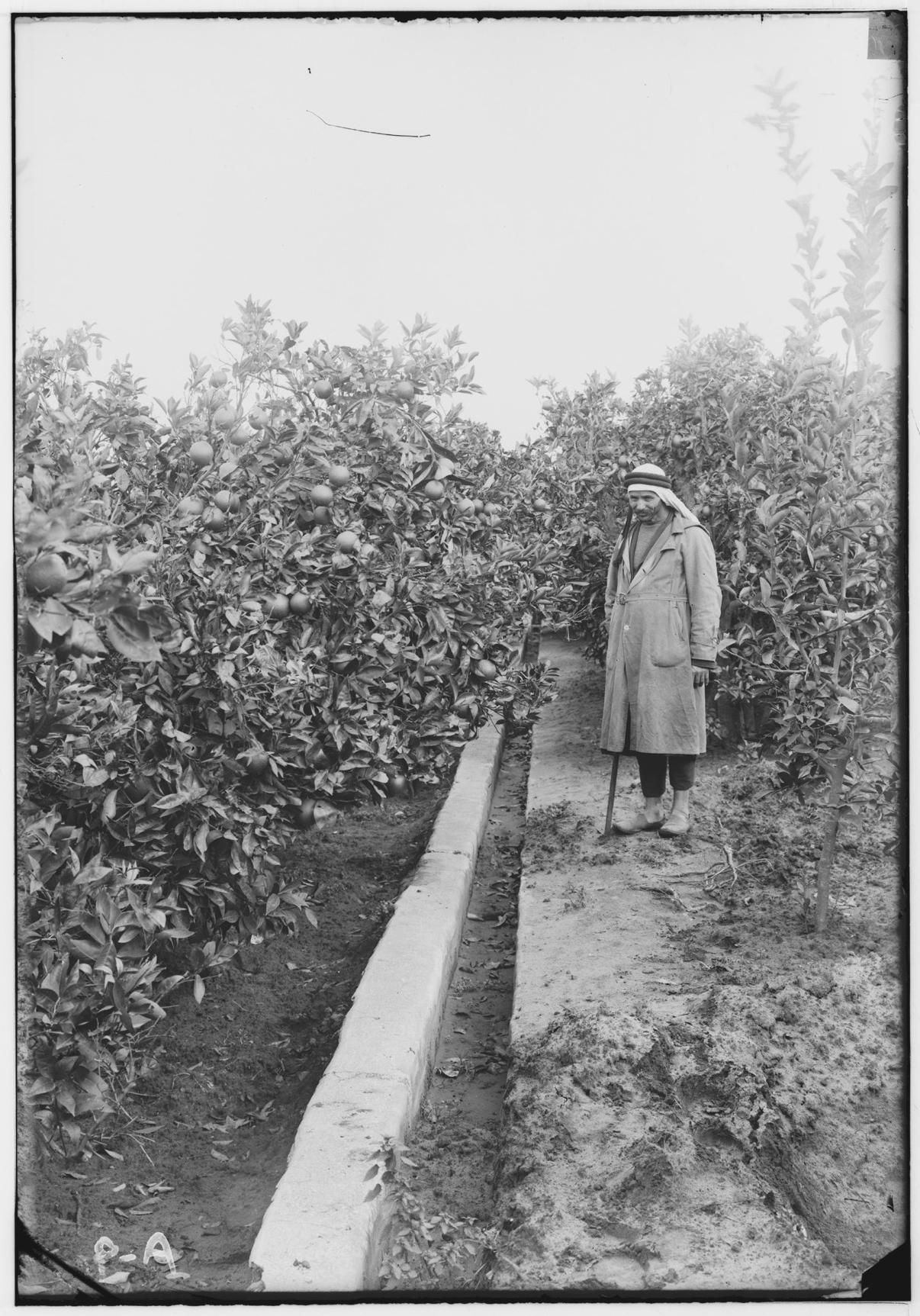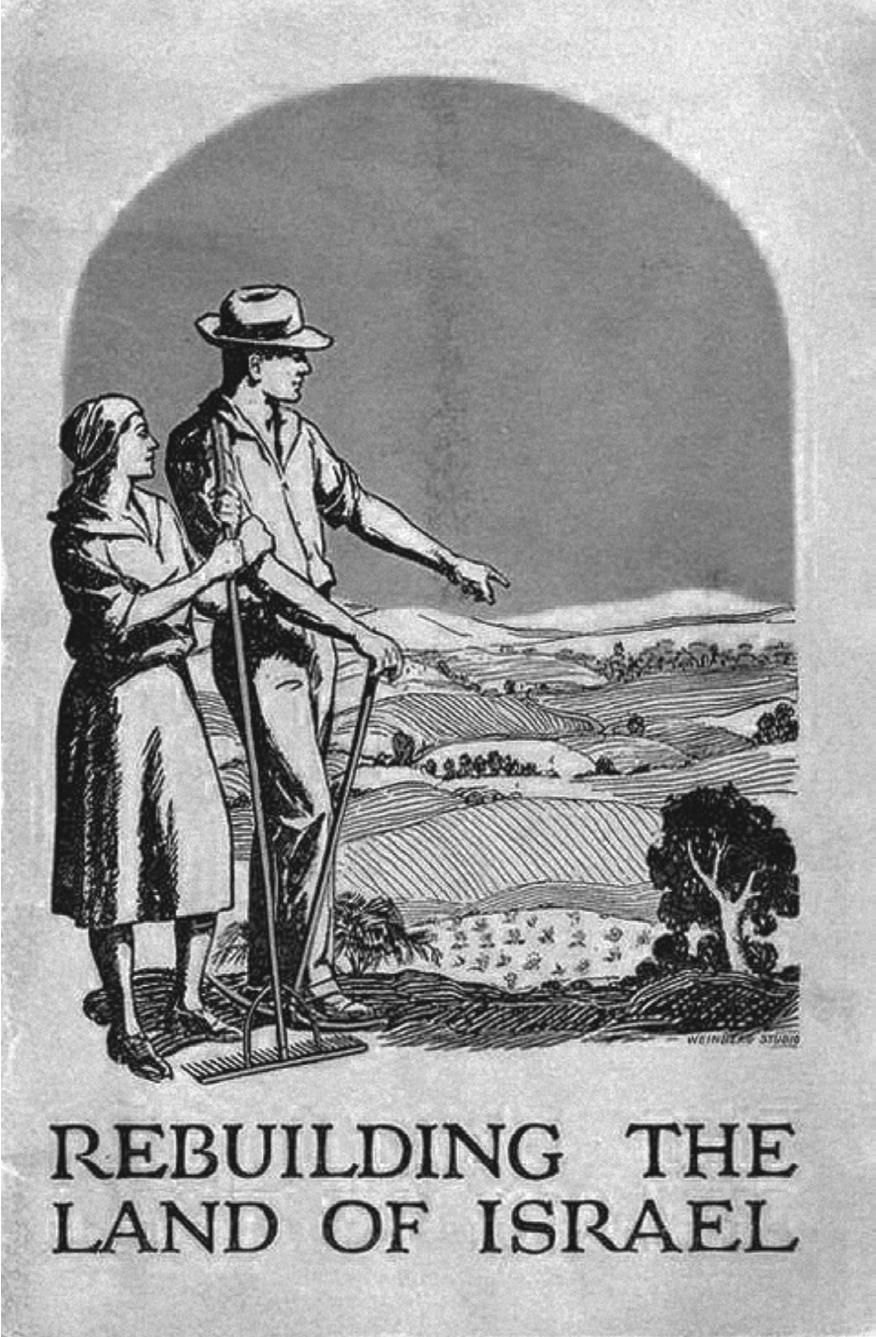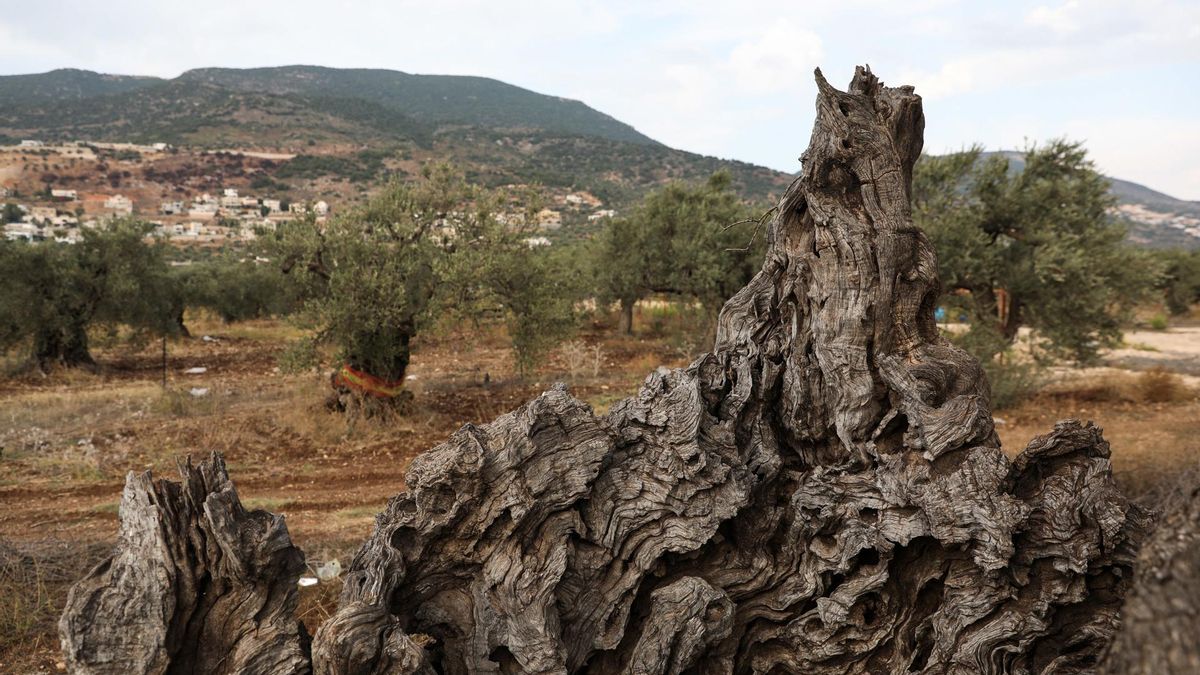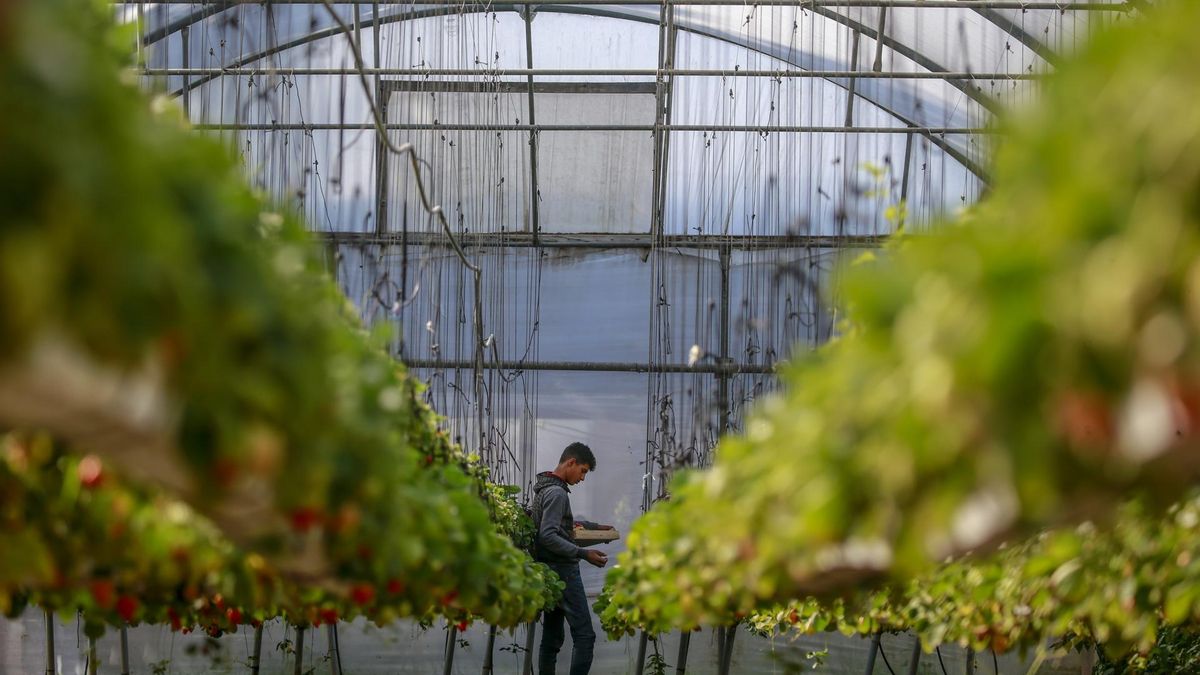The trees also tell the story of Palestine, which Israel wanted to hide from Nakba in 1948 and the one that tries to erase since October 2023 in the Gaza Strip. The trees – the sicomoros, the olive trees, the holm oaks, the palm trees, the fig trees – are the protagonists of Paola Caridi's book, THE MORERA DE JERUSALÉN (Errata Naturae). In its pages there is a different story of the occupation of Palestine and the construction of the state of Israel, in which trees are also imposed on native vegetation and play a prominent role in the objective of eradicating the native inhabitants and their (agri) culture.
“In Palestine, trees tell a story of oppression,” says Caridi in an interview with eldiario.es. The Italian journalist and historian, who has lived and worked in the Middle East more than two decades, explores the different ways in which vegetation has been used to oppress or dispossessed and to create an alternative story to reality.
The trees become instruments to cancel a story and create a new
In the case of the Israeli-Palestinian conflict, “trees are a political instrument” rather than economic, as occurs in other parts of the world. “The trees, which should define what Earth is, detail a longer story than that of a single human being, become instruments to cancel a story and create a new one, without a link between them,” he explains.
That happened with Los Naranjos de Yafa, who in the first half of the 19th century began to cultivate intensively in this coastal area and that transformed the economy and society of the city. The oranges of the variety shami Other countries were exported to the United Kingdom because they resisted the long boat trip and were highly appreciated, but the first Jewish emigrants to Palestine quickly became control of cultivation and trade (in 1929, plantations owned by the Jews already exceeded those of the Palestinians, although the workforce remained mostly Palestinian).

“Right now, if you ask anyone, Yafa's oranges are Israelis, so they have managed to erase that memory,” says the historian, who dedicates a chapter of her book to how a fruit that goes from being a symbol of the Palestinian economic boom is “resigned” – which converts the one of already one of the main ports of the Eastern Mediterranean – to the image of the new Israeli state.
Caridi describes another of the stories that was created and imposed in the first half of the twentieth century: the myth of the “desert that blooms” with the arrival of Jewish settlers to Palestine. A myth that qualifies as “false” and “invented” because that land already had a very varied and lush vegetation. “Israel was not a desert that had to bloom, it had already flourished: it was the bustan o Palestinian garden composed of orange, almond trees, nísperos, apricot, olive trees, fig trees … ”.
Build a new country with firs
After the foundation of the state of Israel in 1948, construction was consolidated ex new Of a landscape with the planting of millions of non -native trees, in this case, conifers, which are imposed on the Palestinian landscape composed of fruit trees, explains Caridi. The pine is the chosen one because “it reflects an imaginary that is not only that of the Jews of Europe, but that all Europeans have of the Holy Land.”
“We see it in abundance in sacred art, for example, in the work of Leonardo da Vinci 'La Virgen de las Rocas', in which Maria is in a green forest that is not the traditional landscape of the Eastern Mediterranean.” In many portals of Bethlehem there are also firs, which did not grow naturally in that region about two millennia.

The National Jewish Fund (Zionist Agency created in 1901 to buy land in Palestine and promote the transfer of Europe from Europe to that place) was in charge of financing and projecting the plantation of the conifers, especially since 1948. Caridi highlights that it was David Ben Gurion himself, the first leader of Israel between 1948 and 1953, who said that he was missing “an army of trees” newly founded Jewish state.
That army had two objectives, Caridi details: “On the one hand, occupy a landscape, covering the one that existed previously to cover the story, to erase the 500 Palestinian towns that were emptied in the Nakba, either with the trees or building new Jewish localities.” During the so -called Nakba (catastrophe, in Arabic), the new Israeli armed forces expelled some 750,000 Arabs from their homes and lands, emptied and burned hundreds of Palestinian towns, especially those located in the corridor that joins Jerusalem with Tel Aviv.
The forests were built after 1948 to erase the traces that existed from a Palestinian life in that place
“The forests were built after 1948 to erase the traces that existed from a Palestinian life in that place,” says the author. Today, on the stretch of road that joins the two cities – the two power centers in Israel – the firs are imposed in sight.
The other Israeli objective was and is in the long term: “That land does not have to be returned to the native settlers and, therefore, the trees must be used as an instrument to maintain the occupation, to maintain the state of Israel over the years, because the trees do not die in a few years.” Therefore, in just over a century, 250 million trees were planted in the territory where Israel was founded and expanding, occupying and annexing Palestinian areas.
Destroy the link with the earth
“The Palestinians and the Israelis have a completely different conception of what the Earth is,” explains Caridi, which has thoroughly studied that relationship. “In the case of the Palestinians, the relationship (with the earth) is of belonging; in the case of the Israelis, the earth dominates, it is possessed, so there is no respect for the earth, by nature, either by the knowledge of the use of herbs. They can start the olive trees because they do not argue that the trees belong to the earth, do not belong to the Palestinians or the Israelis.”

That special relationship between the Palestinians and their land is what Israel seeks to destroy in all the territories he occupies, also in Gaza during the current genocide, says the writer and journalist. “Apart from destroying agriculture, therefore, the sustenance of humans – and causing hunger and thirst, as we are seeing – Israel goes further: destroys the earth and its link with the natives.”
Caridi points out that annihilating that bond is part of the genocide because it is “systemic, which erases everything, not just human beings.” In addition, it is a strategy, because at the end of everything, “Israel also erases the tests of genocide”: “Destroying the neighborhoods of Ciudad de Gaza, as it is doing now, also destroys its ancient history, which is a Palestinian story. And then build a story ex new”.
Those are the plans of the Israeli government – whose Minister of Finance has openly talked about a real estate business in Gaza – and also of the president of the United States, Donald Trump, who proposed months ago the creation of the “Riviera” of Gaza, once it has been emptied of its original inhabitants by the Israeli army.
There are genocides that include the territory, beyond the population. In the case of Gaza, we cannot separate the genocide from the link with the earth
“There are genocides that include the territory, beyond the population. In the case of Gaza, we cannot separate the genocide from the link with the earth,” says Caridi. “It is a genocide in a land that has to be erased from the map to rebuild a landscape, possessions, domains and to erase a story that does not have to do only with the memory of human life, such as archaeological sites or buildings, but with nature and with the landscape.”
In Gaza, the brutal Israeli offensive has destroyed around 70% of all buildings in the strip, although the percentage exceeds 80% in some areas, according to revealed data by the newspaper Haaretz. But also vegetation and agricultural land have been razed by the Hebrew army: 86% of culture lands are destroyed and more than 12% are not accessible, according to A recent report of the UN World Food Program.

Before the current genocide, Israel launched several assaults on Gaza who had already changed their landscape: “The four wars against Gaza (2008-9, 2012, 2014, 2021) changed the landscape, putting debris on rubble,” says Caridi, adding that the need to realize the displaced in each war also contributed to that change. In addition, restrictions in border areas with Israel decreased agricultural land from 2007, when Hamas took control of the strip and the Israeli authorities responded with the imposition of a rigid blockade by land, sea and air.
“Gaza was the Palestine orchard, vegetables such as tomatoes, cucumbers or strawberries always grew and were very good, better than those of the West Bank, until Israel imposed the blockade in 2007,” recalls Caridi. But, even under the blockade, the Gazati continued to cultivate and produce their own food, until on October 7, 2023 everything changed. Since then, Israel has killed more than 65,000 people in the strip.